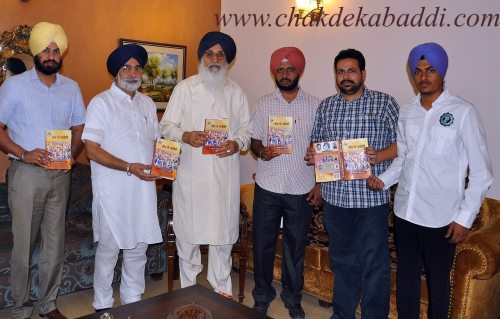National Playing Fields Association of India (NPFAI)
India has a very large population of children, who need open spaces for playing and a
wholesome growth. It was felt that open playing areas used by children, especially in
urban areas, were fast disappearing and falling prey to diversion of land use for
construction and also to encroachment.
At present, out of 700 million plus youth, hardly
50 million have access to playing fields and other sports facilities.
There is a dearth of
both community playing fields and playgrounds in schools and colleges.
With his knowledge of the successful efforts of the Fields in Trust organization in the
U.K., in combating this problem, Minister initiated formation of the National Playing
Fields Association of India (NPFAI) in February 2009, with the main objective to develop,
promote, protect and expand playing fields and open spaces in the country. Minister is
the Chairman of the society, and eminent persons such as F.S. Nariman, Bishan Singh
Bedi, P.T. Usha, Indu Puri and Cdr. Nandy Singh and Bhaichung Butia are members of the
Society.
After formation of UPA Government in 2009, a Memorandum of Understanding
(MOU) has been signed between the NPFAI and Fields in Trust (FIT) in August 2009, to
benefit from the successful experience of the 80-year old FIT. In the U.K., FIT has
significantly contributed to give statutory protection to playing fields and outdoor
recreational land. FIT team visited Delhi and made an assessment of playing fields and 6
open spaces in the city, with the aim to use its expertise to select and develop a few
model grounds. Minister met with the Duke of Edinburgh, who is the Chief Patron of
FIT, in London, to take the partnership to a greater level. The Duke has assured support
to implement the objectives of the NPFAI.
Minister has already requested the Delhi Government to protect the open spaces for
use of children and the disabled. Ministry of Urban Development has also been
requested to create a legal framework mandating all new residential developments to
reserve space for playgrounds.
The concept was also introduced by the Minister, to the State Governments, during the
National Conference of State Sports Ministers held during August, 2009. States were
requested to form similar PFAs, for which draft documents have been given to them, to
carry forward the mission.
The mission of the Playing Fields association is to create a national level body, with
state-level bodies federated to it, which will function as a strong pressure group, to
reclaim and increase the recreational open spaces in urban areas, which are being lost
to the youth of India.
For eg.

……………………………………………………………………………………………………………..

Kunal Purohit, Hindustan Times
Mumbai, August 29, 2012
The city has always struggled for open spaces, and the report brought out by the Mumbai Metropolitan Region-Environment Improvement Society (MMR-EIS), quantifies how badly off Mumbai is. There are 45 open spaces plots on the critical list and in need of urgent attention, only 35% of the
open spaces designated for Mumbaiites are accessible to all and 160 hectares of open spaces could be lost forever if the civic body goes ahead with its controversial open spaces policy.
The civic body’s proposed open spaces policy permits private parties to take over 25% of the area of recreation grounds, provided they pay to maintain the remaining 75% of the ground.
Past experiences have revealed that in such cases, often clubs backed by political parties take over these open spaces and block access to the public. Since November 2007, HT has been campaigning for the city’s open spaces and tracking the issue.
The report prepared by the MMR-EIS, a body funded by the Mumbai Metropolitan Region Development Authority, is on all environmental features of the city.




